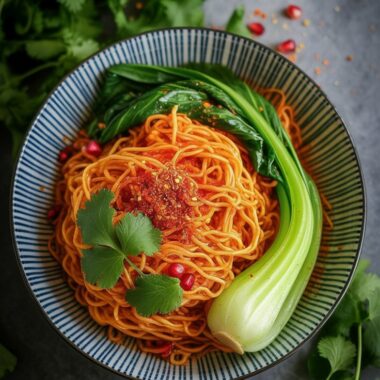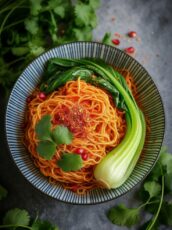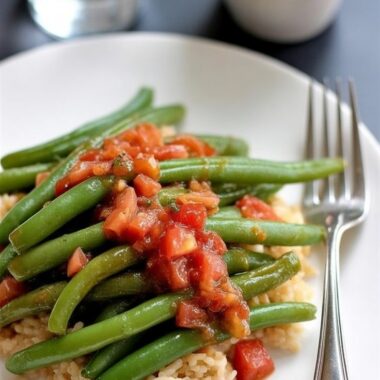If there’s one dish that never fails to transport me straight back to the crowded, neon-lit night markets of Taiwan—it’s a big, steamy bowl of Taiwanese Chicken and Rice. This dish isn’t flashy or complicated, but it’s packed with so much comfort and flavor that it’s become one of my all-time favorite things to make at home.
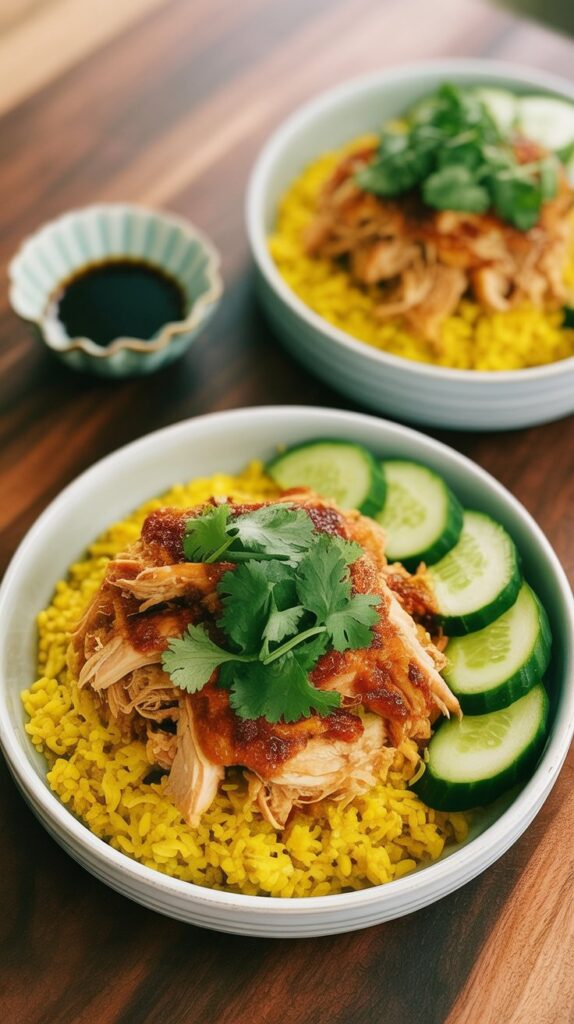
Just imagine: tender shredded chicken soaked in a savory soy-based sauce, draped over chicken-fat rice, and finished with golden crispy shallots. It’s the kind of bowl that makes you close your eyes after the first bite and wonder how something so simple can be this good.
Why I Keep Making This Over and Over
This recipe holds a lot of nostalgia for me. It reminds me of late-night bites after school, my favorite market stall tucked behind an alley in Tainan, and that comforting feeling of a home-cooked meal made with love. After moving away and struggling to find the same taste in restaurants abroad, I finally took matters into my own hands.
I’ve tweaked and tested this recipe more times than I can count, and I can honestly say: it’s exactly how I remember it. Moist chicken, rich shallot oil, and the soft, fluffy rice that soaks it all in.
It’s simple, but the details matter. Two things really make this dish:
The Two Secrets That Make This Dish Truly Authentic
1. Fried Shallots in Chicken Oil
This isn’t just for garnish—this is the soul of the dish. Once you’ve rendered the fat from the chicken skin and fried your shallots until crisp and golden, your kitchen will smell unreal. The oil left behind is gold. I drizzle it over everything—rice, noodles, even eggs.
Honestly, just spooning some of that shallot oil over rice is a meal on its own.
2. Chicken Stock-Cooked Rice
Please don’t skip this step. Cooking your rice in the broth from poaching the chicken gives it a richness you just can’t get from plain water. The rice absorbs the essence of the herbs, spices, and chicken fat, and turns into the most flavorful base imaginable.
Let’s Talk Ingredients (And a Few Tips)
You won’t need anything fancy here—just pantry staples and a few aromatics.
- Chicken:
Thighs are my go-to for flavor, but breasts work great too. I usually keep the skin for rendering and discard the bones after poaching. - Shallots:
Thinly sliced and fried until golden. Don’t rush this—low and slow gives you the crispiest results. - Chicken Stock:
Homemade or store-bought. If you’re short on time, even a good-quality broth will do wonders here. - Aromatics & Seasoning:
Ginger, green onion, bay leaf, five-spice powder, and (optional but amazing) Sichuan peppercorns give the broth depth and warmth. - Soy Sauce + Sugar:
This is your sauce base. Sweet and salty with a bit of chicken stock—it clings to the shredded chicken beautifully.
Pro tip: Always taste your sauce before adding it to the chicken—it should be bold and savory, not overly sweet.
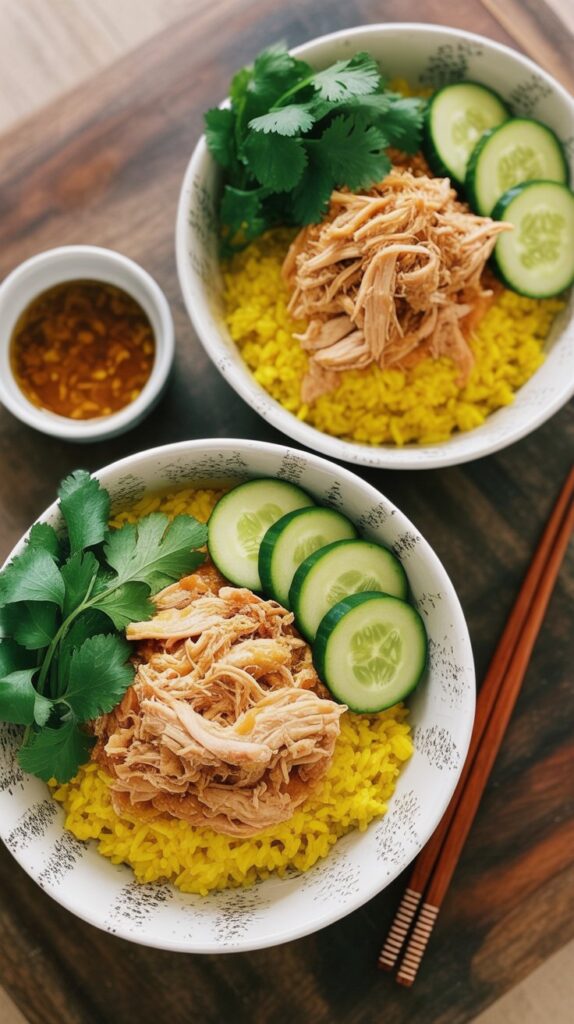
How I Make Taiwanese Chicken and Rice at Home
This recipe is broken down into a few parts, but it’s totally manageable—and so worth it.
Step 1: Poach the Chicken
Add the chicken (skin removed) to a pot with water, chicken stock, ginger, green onion, Sichuan peppercorns, five-spice powder, and a bay leaf. Bring to a simmer, and once it’s bubbling gently, let it cook for 8–10 minutes.
Then turn off the heat, cover the pot, and let it rest for 20 minutes. This resting step is key—it finishes cooking the chicken gently and keeps it juicy.
Step 2: Render the Chicken Skin & Fry the Shallots
In a skillet, add a little oil and the chicken skin. Let the skin cook over medium-high heat until the fat renders out and the skin is crispy (about 6–7 minutes). Remove the skin, then add your sliced shallots to that flavorful oil.
Fry for 3–5 minutes until golden brown and crisp. Drain on paper towels and save that fragrant shallot oil—it’s liquid gold.
Step 3: Cook the Rice (Optional but So Worth It)
I always use the leftover chicken broth to cook my rice. It adds richness, aroma, and makes the dish feel complete. Just sub the broth for water when cooking rice in your rice cooker or pot.
Step 4: Make the Sauce
In the same pan used for shallots, add soy sauce, sugar, and about 1/4 cup of chicken broth. Simmer for 2–3 minutes until it slightly thickens. This savory-sweet sauce soaks beautifully into the chicken.
Step 5: Shred the Chicken
Once cooled enough to handle, shred the chicken into bite-sized pieces. Toss it with half the sauce and half of the crispy shallots to get every bite coated in flavor.
Step 6: Assemble the Bowl
Start with a scoop of that chicken-stock rice, then pile on the shredded chicken. Top it with more crispy shallots and a generous drizzle of that chicken oil and sauce.
What to Serve It With
This bowl is amazing on its own, but here are a few things I like to serve alongside:
- Taiwanese cucumber salad – Light, crunchy, and refreshing.
- Simple steamed greens like bok choy or choy sum.
- A soft-boiled egg for extra protein and richness.
- Pickled daikon for a little zing to balance the richness.

Real-Life Tips From My Kitchen
- If you’re short on time, you can fry up a big batch of shallots ahead of time and keep them in an airtight jar. They last for weeks.
- Don’t toss the rendered chicken skin—snack on it like chips or chop it up and use it as a topping.
- Want to add more heat? A spoon of chili crisp on top goes beautifully with this dish.
- Use a rice cooker with the broth—it saves time and turns out perfect every time.
Taiwanese Chicken and Rice
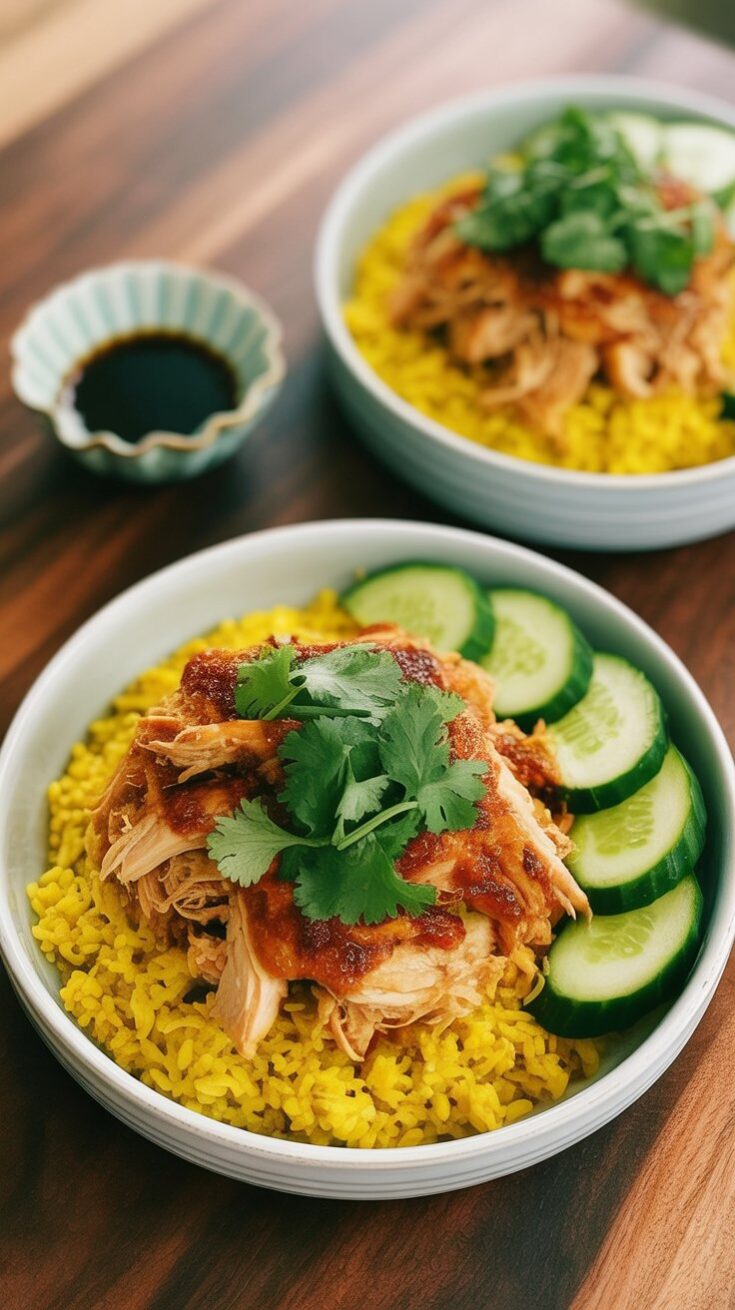
If I had to pick just one comfort food that takes me straight to the night markets of Taiwan, this would be it.
Ingredients
- 2 boneless chicken breasts or thighs (skin separated from meat)
- 2½ cups chicken stock
- 2½ cups water
- 3 thin slices of fresh ginger
- 1 stalk green onion
- 1 tsp Sichuan peppercorns (optional, but adds lovely depth)
- 2 tsp five-spice powder
- 1 bay leaf
- 3 shallots, thinly sliced
- 2½ tbsp soy sauce
- 1 tbsp sugar
- Cooked white rice, for serving
Instructions
- In a large pot, combine the chicken stock, water, chicken (just the meat), ginger slices, green onion, Sichuan peppercorns, five-spice powder, and bay leaf. Bring everything to a gentle boil over medium-high heat, then lower to a simmer and let the chicken cook for 8–10 minutes.
- Turn off the heat, cover the pot with a lid, and let the chicken steep in the hot broth for another 20 minutes. This keeps it juicy and tender.
- Meanwhile, heat a pan over medium-high heat and add a little oil. Place the reserved chicken skin in the pan and let it slowly render and crisp up—this takes about 7 minutes. Once golden and crispy, remove the skin and add the sliced shallots to the same pan. Fry until golden and crisp, about 3–5 minutes. Drain the shallots on a paper towel.
- (Optional but so worth it): Use the flavorful chicken broth to cook your rice for an extra boost of taste.
- To make the sauce, keep the shallot oil in the pan and stir in soy sauce, sugar, and about ¼ cup of the chicken broth. Let it simmer for a few minutes until slightly thickened and glossy.
- Once the chicken is cool enough to handle, shred it using your hands or two forks. Mix in half the sauce and a handful of the crispy shallots for that first layer of flavor.
- To assemble: Scoop a generous serving of rice into bowls, top with the shredded chicken, sprinkle on the remaining crispy shallots, and finish with a drizzle of the sauce and a touch of that golden chicken oil.
Nutrition Information:
Yield: 3 Serving Size: 1Amount Per Serving: Calories: 467Total Fat: 12gSaturated Fat: 3gTrans Fat: 0gUnsaturated Fat: 8gCholesterol: 129mgSodium: 1175mgCarbohydrates: 45gFiber: 4gSugar: 12gProtein: 45g
Asianplated.com, occasionally offers nutritional information for recipes contained on this site. This information is provided as a courtesy and is an estimate only. This information comes from online calculators. Although allchickenrecipes.com attempts to provide accurate nutritional information, these figures are only estimates.
Final Thoughts
This Taiwanese Chicken and Rice isn’t just dinner—it’s comfort in a bowl. It’s the kind of meal that makes you feel cared for, whether you’re making it for your family or just feeding yourself after a long day. The best part? It’s humble, wholesome, and doesn’t need anything fancy to taste incredible.
If you’ve never tried making this before, I hope this recipe convinces you to give it a go. It might just become your new favorite too.
Let me know how yours turns out—I’d love to hear if you made any tweaks or served it with something special!
Try other Taiwanese recipes:


